Abstract
STUDY OBJECTIVE--The aim was to compare survival with colon and rectal cancer across the 10 districts of Wessex taking into account the age and sex of the individual. DESIGN--The study was based on registrations on the Wessex Cancer Registry between 1979 and 1984 with colon and rectal cancer. Survival up to 31 December 1986 was examined using a Cox regression model; individuals surviving to the end of the follow up period were treated as censored in the analysis. Survival was examined in the first fortnight, the first month, and the first six months after registration separately. PARTICIPANTS--The data comprised 6239 residents of the Wessex Region who had been diagnosed with colon cancer and 3203 residents diagnosed with rectal cancer. For 140 cases survival data or age were missing and these cases were excluded. MEASUREMENTS AND MAIN RESULTS--Results are presented in the format of a league table giving the order of districts from lowest to highest survival rates. No significant differences in survival are found between districts in relation to rectal cancer. We find that one or two districts have consistently high or low survival rates with colon cancer in various periods of follow up, but cannot differentiate between the districts in the centre of the list. Site unspecified is considered as an explanatory variable; it is more predictive than district, and it approaches the importance of age in explaining survival with colon cancer. CONCLUSIONS--There are significant differences in survival with colon cancer between districts; however data on stage at registration are not available and we are unable to say whether the differences in survival are due to differences in stage at diagnosis or differences in survival with similar stage at diagnosis. We found that cases where the site of the cancer within the colon was not recorded on the register have significantly lower survival, and we suggest that site unspecified may be related to stage at diagnosis.
Full text
PDF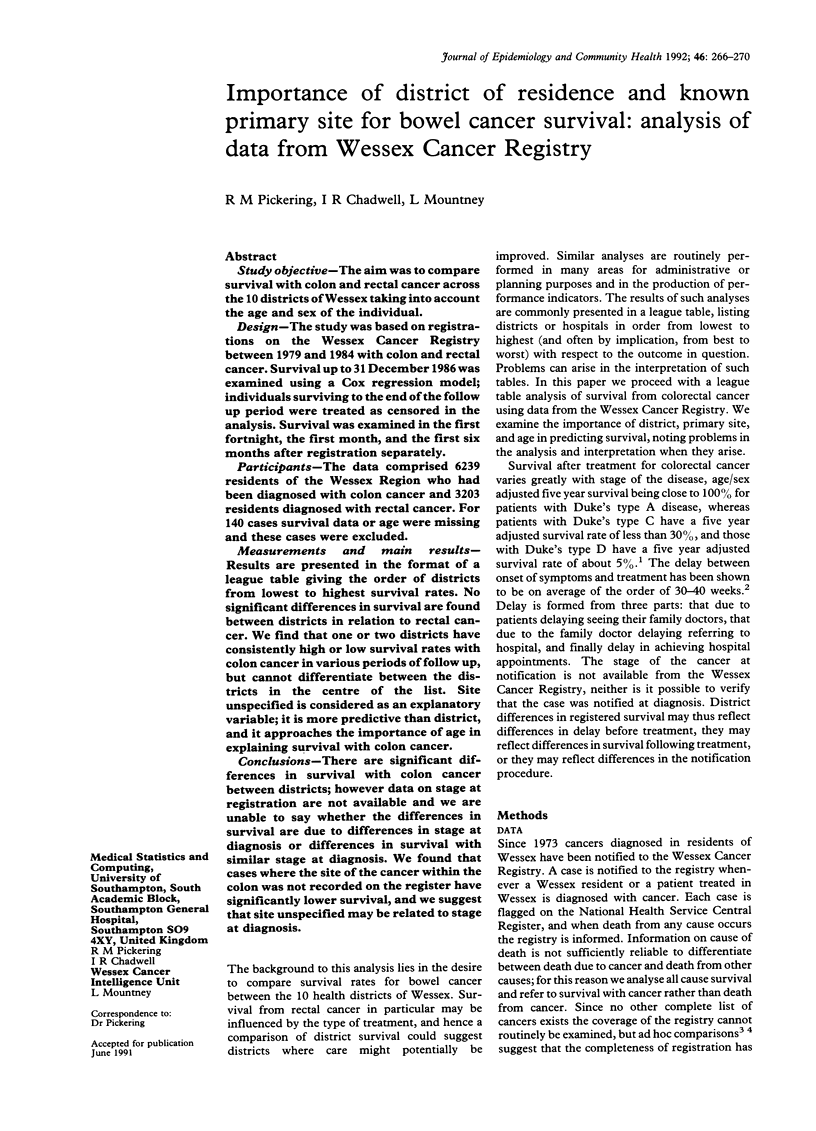
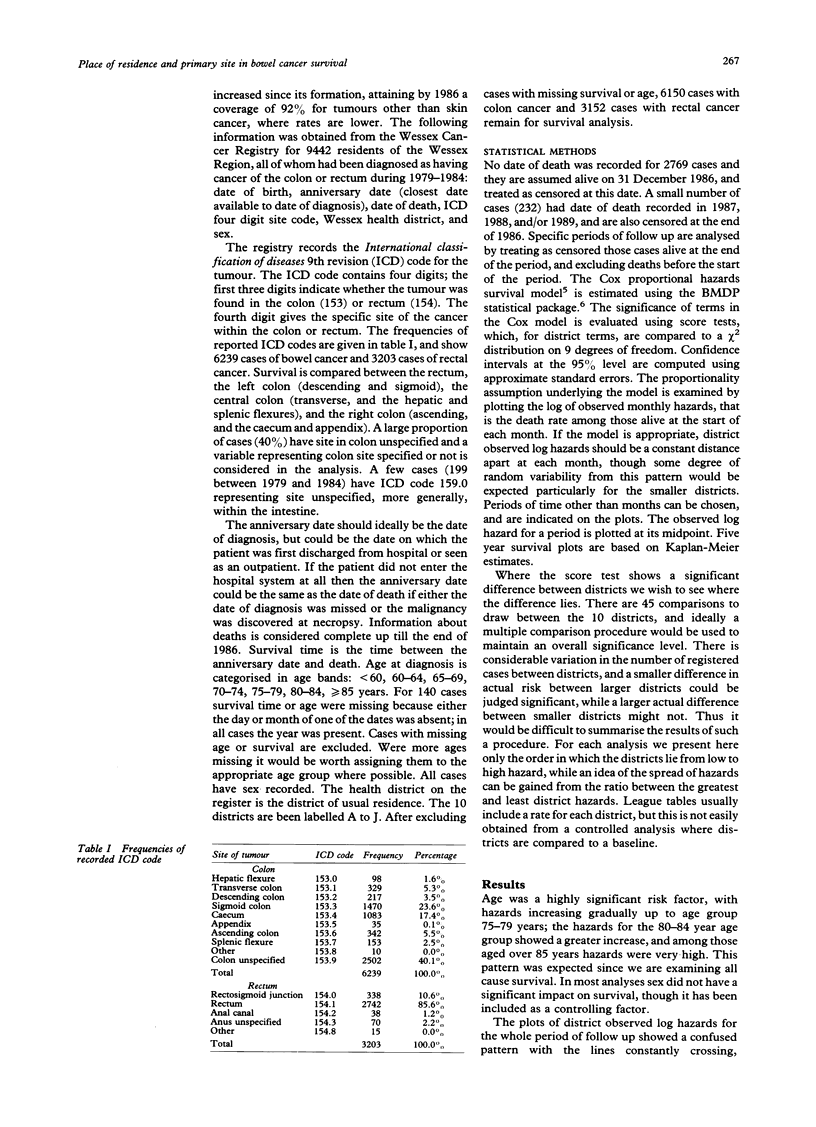
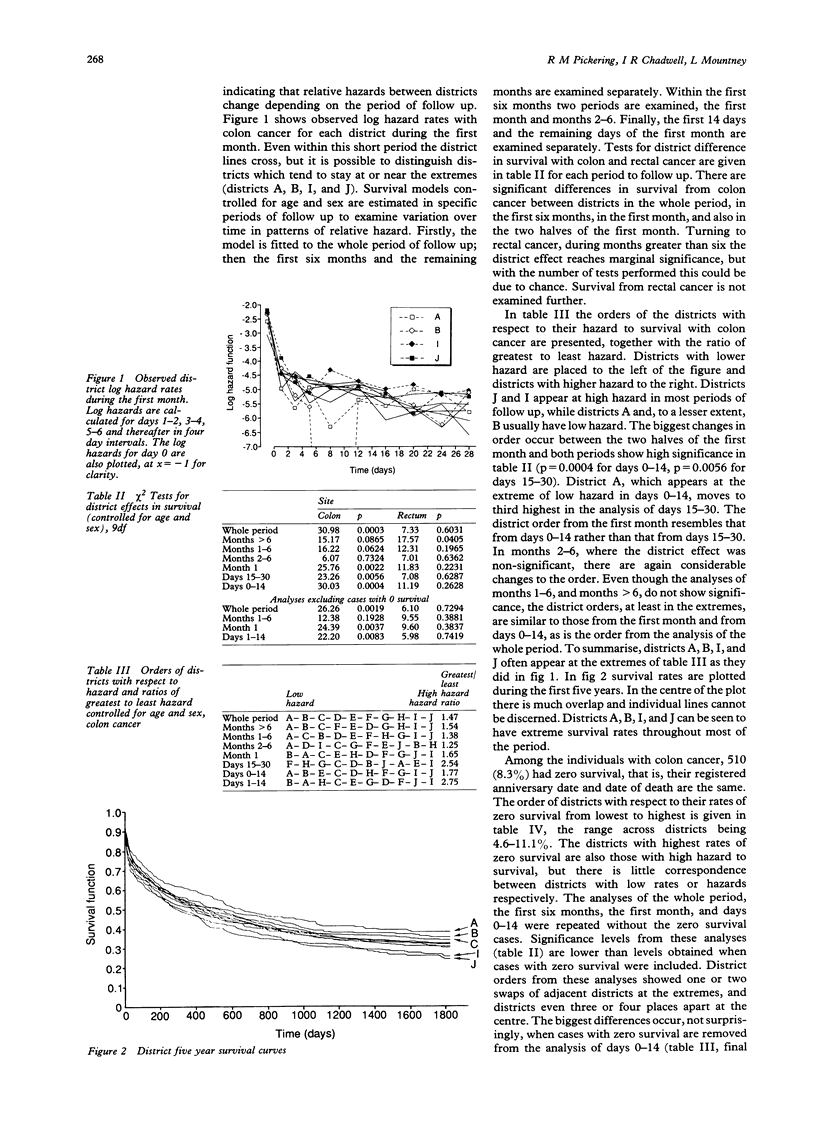
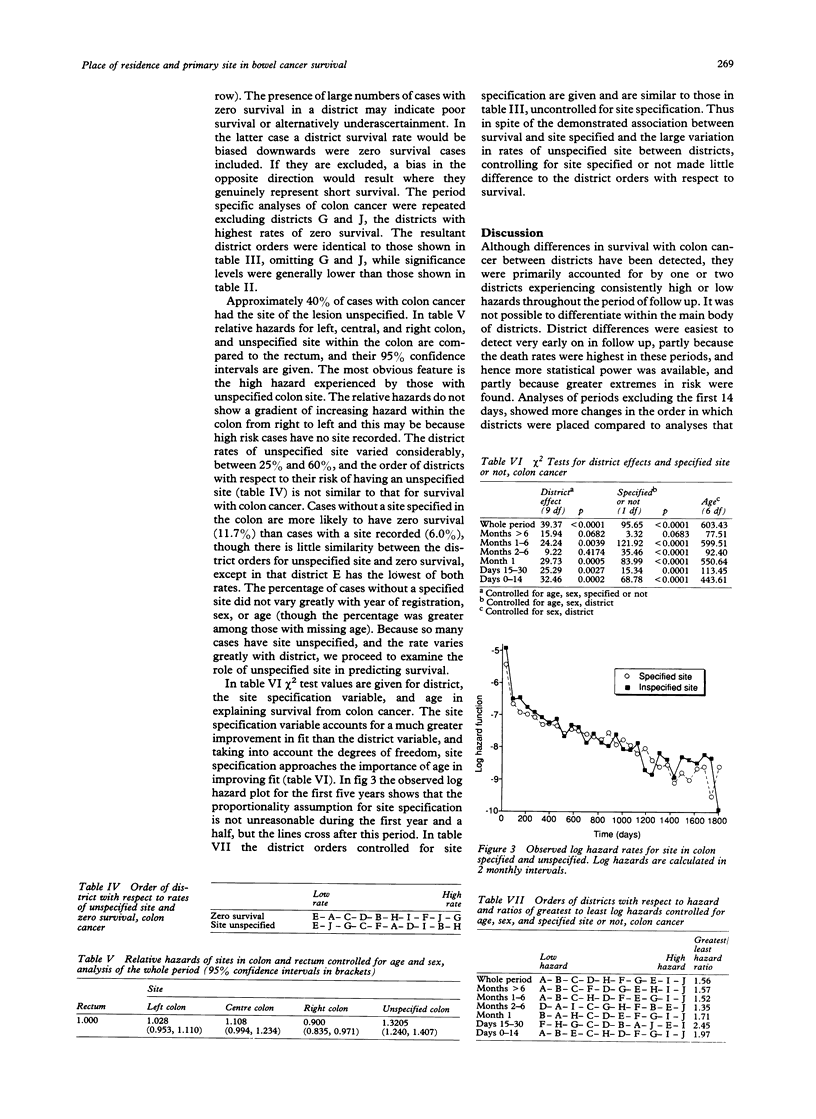
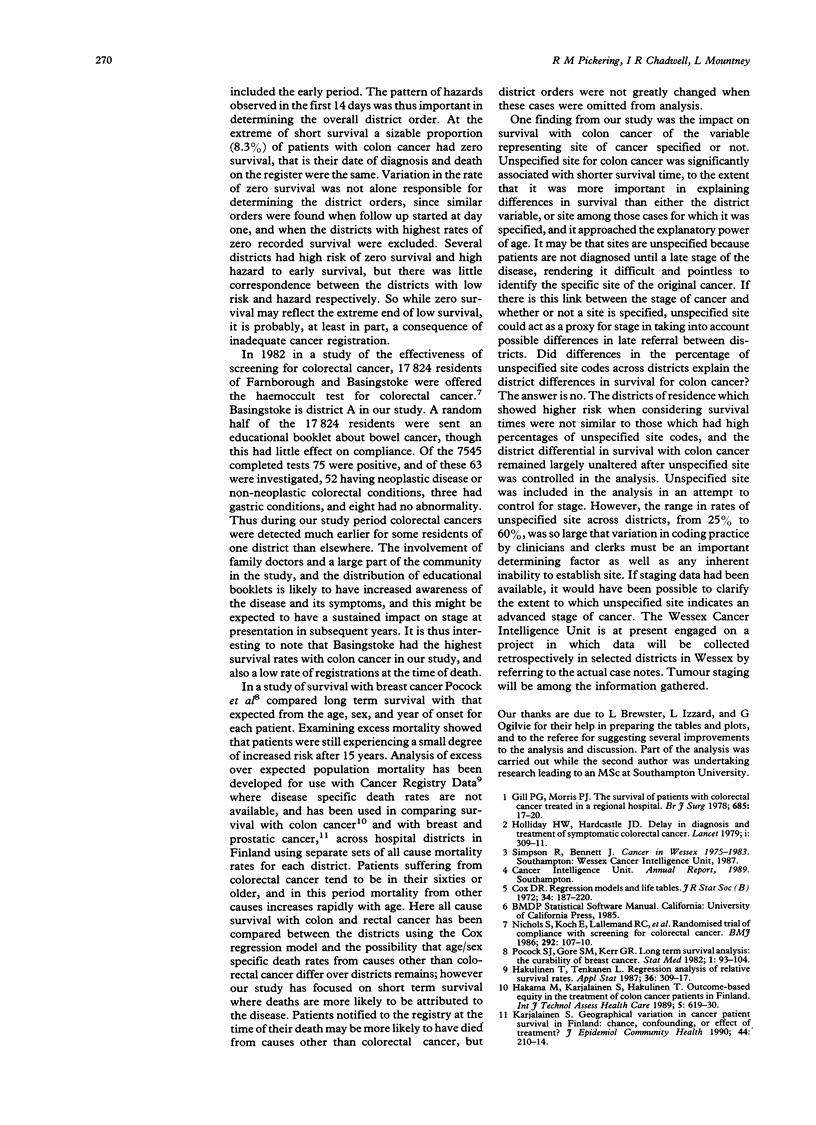
Selected References
These references are in PubMed. This may not be the complete list of references from this article.
- Gill P. G., Morris P. J. The survival of patients with colorectal cancer treated in a regional hospital. Br J Surg. 1978 Jan;65(1):17–20. doi: 10.1002/bjs.1800650105. [DOI] [PubMed] [Google Scholar]
- Hakama M., Karjalainen S., Hakulinen T. Outcome-based equity in the treatment of colon cancer patients in Finland. Int J Technol Assess Health Care. 1989;5(4):619–630. doi: 10.1017/s0266462300008497. [DOI] [PubMed] [Google Scholar]
- Holliday H. W., Hardcastle J. D. Delay in diagnosis and treatment of symptomatic colorectal cancer. Lancet. 1979 Feb 10;1(8111):309–311. doi: 10.1016/s0140-6736(79)90718-9. [DOI] [PubMed] [Google Scholar]
- Karjalainen S. Geographical variation in cancer patient survival in Finland: chance, confounding, or effect of treatment? J Epidemiol Community Health. 1990 Sep;44(3):210–214. doi: 10.1136/jech.44.3.210. [DOI] [PMC free article] [PubMed] [Google Scholar]
- Macfie J. Towards cheaper intravenous nutrition. Br Med J (Clin Res Ed) 1986 Jan 11;292(6513):107–110. doi: 10.1136/bmj.292.6513.107. [DOI] [PMC free article] [PubMed] [Google Scholar]
- Pocock S. J., Gore S. M., Kerr G. R. Long term survival analysis: the curability of breast cancer. Stat Med. 1982 Apr-Jun;1(2):93–104. doi: 10.1002/sim.4780010202. [DOI] [PubMed] [Google Scholar]


